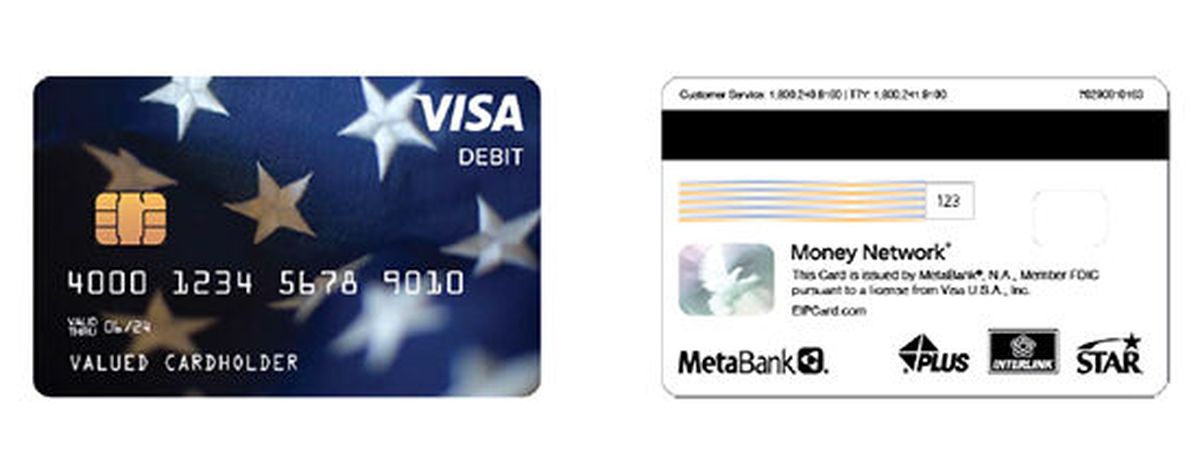Economic stimulus money on prepaid debit cards causes confusion

Prepaid debit cards holding the $600 economic stimulus payment per person approved by Congress have been showing up in people’s mailboxes, but the plain white envelopes they arrive in have some people worried that people may throw them in the trash thinking it is junk mail.
Denae Veselits said she has several family members who have received the debit cards in the mail.
“The people I know who got it, it’s so confusing,” she said. “The first problem is the envelope. It looks like junk mail. One of my sisters did throw it away, but she retrieved it.”
The plain white envelopes have a return address from Omaha, Nebraska. The IRS said the envelope “prominently displays the U.S. Department of the Treasury seal,” but the seal next to the return address is small and not easily recognized. The lettering identifying it as the Department of the Treasury seal is tiny, Veselits said.
“We put it on the computer screen to see how much you had to blow it up to read it,” she said.
The envelope also includes red lettering that reads “Not a bill or advertisement. Important information about your Economic Impact Payment.”
The prepaid debit card inside the envelope is nondescript and has no official markings. The front is blue with white stars and says “Visa Debit” in the upper right corner. The cards are issued by MetaBank, which is listed on the back of the card.
Veselits said that when the recipient calls the listed number to activate the card, they are asked to provide the last six digits of their Social Security number instead of the last four digits as is typical.
“There are so many reasons to think it’s a scam,” she said.
According to the IRS, about 8 million of the prepaid debit cards have been sent out and millions more are receiving paper checks. Residents of the western part of the U.S. are more likely to receive a prepaid debit card than a check, the IRS said. People can visit irs.gov to check to see if their check or debit card has been mailed yet.
The card can be used as a debit card and people can check the balance for free by using the phone, web site or mobile app, according to the IRS. However, Veselits said people she knows who have used an ATM machine to check the balance have been charged fees ranging from 25 cents to $2. That creates issues if they try to get the entire $600 in cash, she said. “It’s so problematic,” she said.
She said the people she knows who have attempted to get the cash off the card or transferred to their bank accounts have struggled to do so, even if they visit a local bank. “It’s just not an easy thing,” she said. “If you want to use it as a debit card, it’s perfectly fine. But if you want to get the cash or transfer it into your accounts, that’s where the problems are.”
Neil Claflin said he got his prepaid debit card in the mail last week. He wanted to take the cash off the card and put it into his checking account, so he drove to his bank. The teller told him he needed to remove the cash from the card at the ATM, but Claflin found himself stumped when he tried . When the ATM machine asked what type of card it was, he selected “credit card.”
“I just assumed it was a credit card,” he said.
But each time he made the selection, he got an error message. So he went back to the teller, who told him he needed to select “checking account” instead. Claflin went back to the ATM, got his cash, and then deposited it into his account.
The process worked, but it took nearly 40 minutes and involved multiple trips from the ATM to the teller and back, Claflin said. “I was less than pleased,” he said.
Claflin said it would have been better if there had been instructions included on how to get cash from the card. “It wasn’t a smooth transaction,” he said. “It could have been better thought through.”
Veselits said she wishes the IRS had been more vocal about telling people what to look for when the stimulus payment arrives in their mailboxes so it doesn’t accidentally get thrown out. “This debit card is quite mysterious,” she said.